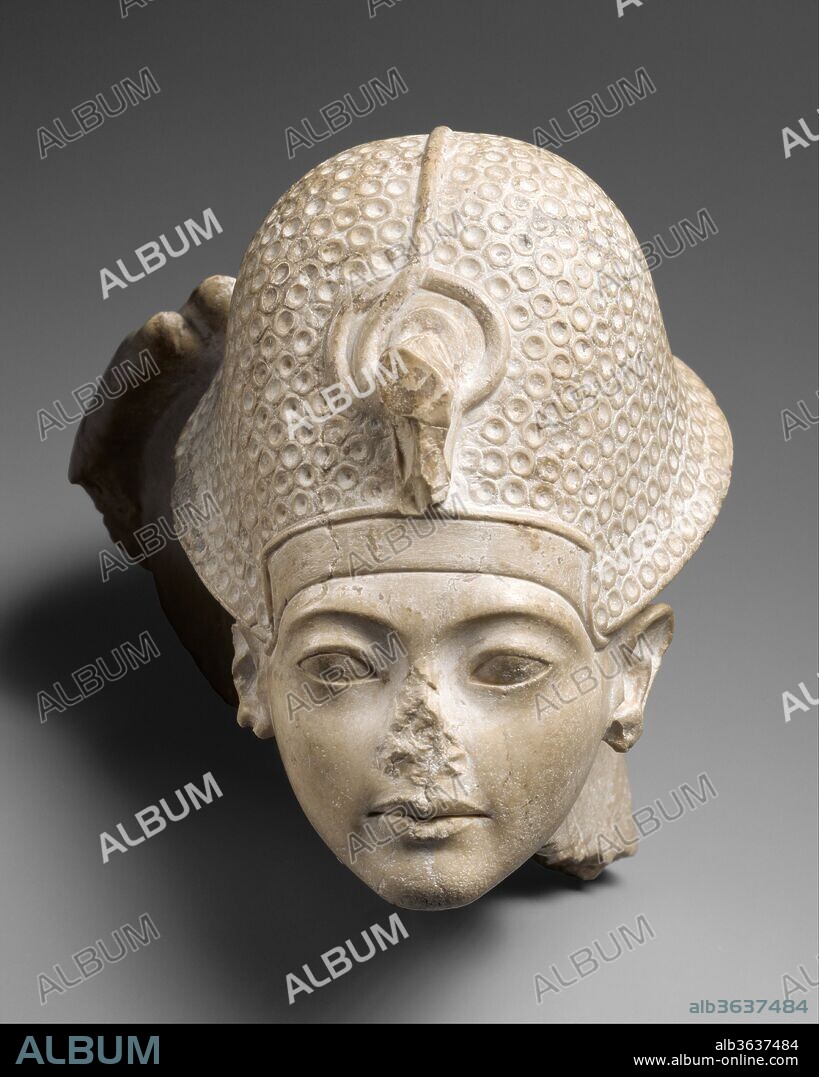alb3637484
Head of Tutankhamun

|
Ajouter à une autre Lightbox |
|
Ajouter à une autre Lightbox |



Avez-vous déjà un compte? S'identifier
Vous n'avez pas de compte ? S'inscrire
Acheter cette image

Titre:
Head of Tutankhamun
Légende:
Voir la traduction automatique
Head of Tutankhamun. Dimensions: H. 17.2 cm (6 3/4 in.); W. 16 cm (6 5/16 in.); D. 23.6 cm (9 5/16 in.). Dynasty: Dynasty 18. Reign: reign of Tutankhamun. Date: ca. 1336-1327 B.C..
This head is a fragment from a statue group that represented a god seated on a throne with the young king Tutankhamun in front of him. The king's figure was considerably smaller than that of the god, indicating his subordinate status in the presence of the deity. All that remains of the god is his right hand, which touches the back of the king's crown in a gesture that signifies Tutankhamun's investiture as king. During coronation rituals, various types of crowns were put on the king's head. The type represented here--probably a leather helmet with metal disks sewn onto it--was generally painted blue, and is commonly called the "blue crown." The ancient name was khepresh.
Statue groups showing a king together with gods had been created since the Old Kingdom, and formal groups relating to the pharaoh's coronation were dedicated at Karnak by Hatshepsut and other rulers of Dynasty 18. The Metropolitan's head of Tutankhamun with the hand of the god is special because of the intimacy with which the subject is treated. The face of the king expresses a touching youthful earnestness, and the hand of the god is raised toward his crown with gentle care.
A cast of the head has recently been matched by a scholar to the remains of an indurated limestone seated statue of a god in the storerooms at Karnak in Thebes. She reports that the join is minimal, but conclusive. This confirms the long supposed origin of the Museum's head from Karnak temple, and also resolves the question of the young king's pose - he was standing rather than kneeling in front of the god. The seated god at Karnak is only preserved from the waist down and is much damaged, so that the god is not identified specificially. Amun is, however, the likely candidate.
Technique/matériel:
Indurated limestone
Période:
New Kingdom, Amarna Period
Musée:
Metropolitan Museum of Art, New York, USA
Crédit:
Album / Metropolitan Museum of Art, NY
Autorisations:
Modèle: Non - Propriété: Non
Questions sur les droits?
Questions sur les droits?
Taille de l'image:
3276 x 4094 px | 38.4 MB
Taille d'impression:
27.7 x 34.7 cm | 10.9 x 13.6 in (300 dpi)
Mots clés:
 Pinterest
Pinterest Twitter
Twitter Facebook
Facebook Copier le lien
Copier le lien Email
Email
